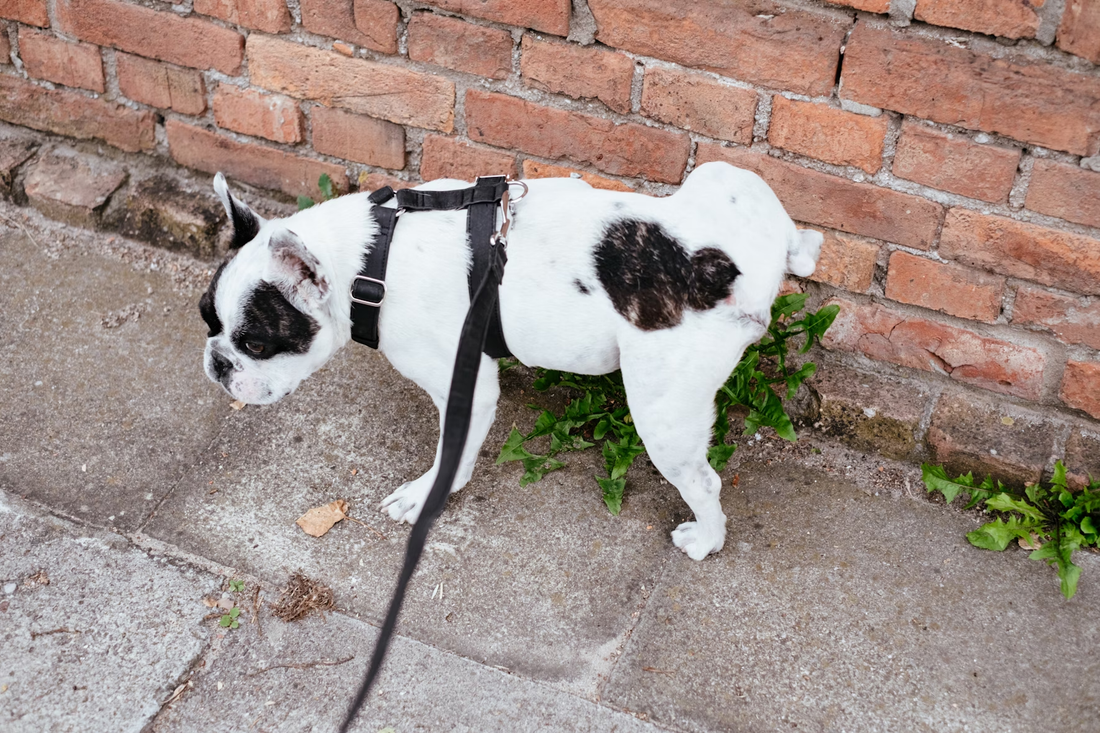Dogs have a fascinating way of communicating with us through their body language. One curious behavior that many dog owners have observed is their dog kicking their back leg out. This seemingly random motion can have various meanings and may be influenced by different factors. In this article, we will explore the different reasons why dogs kick their back leg out and what it could potentially indicate.
Understanding Your Dog's Body Language
Before we dive into the specifics of leg kicking, it's important to understand the basics of canine body language. Dogs communicate through a combination of vocalizations, facial expressions, and body movements. Recognizing and interpreting these signals can help us better understand our furry friends.
When it comes to leg kicking, there's more to it than meets the eye. Let's explore some fascinating details about this behavior.
Decoding the Leg Kick
When a dog kicks their back leg out, it can be an involuntary reaction or a deliberate behavior. One common reason for this action is related to scent marking. Dogs have scent glands in their paws, and kicking their leg can help distribute their scent onto the surrounding environment, marking their territory. Additionally, leg kicking can also be a way for dogs to physically spread their scent, which can convey messages to other dogs in the area.
But why do dogs have scent glands in their paws? Well, these glands contain pheromones, chemical substances that play a crucial role in communication between dogs. Pheromones can transmit information about a dog's sex, reproductive status, and even their emotional state. So, when a dog kicks their leg, they are not only leaving their scent behind but also sharing important information with other canines.
Leg kicking can also be influenced by instincts inherited from their wild ancestors. In the wild, canids would kick up dirt after eliminating to cover their scent and avoid attracting predators. This behavior can still be seen in domesticated dogs, even if it serves no practical purpose in their current environment.
Other Common Dog Body Language Signs
While leg kicking can be intriguing, it's essential to consider it within the context of other body language signs. Dogs use a combination of signals to convey their emotions and intentions. Some common body language signs include:
- Tail positions and movements
- Ear positions
- Eye contact or avoidance
- Facial expressions
- Body posture and movements
By observing these cues alongside leg kicking, pet owners can gain a more holistic understanding of their dog's behavior. It's like deciphering a secret code that our furry companions use to communicate with us and other dogs.
So, the next time you see your dog kicking their leg, take a moment to appreciate the intricate ways in which they express themselves. It's just one piece of the puzzle that makes up the rich tapestry of canine body language.
The Science Behind the Leg Kick
To further comprehend why dogs kick their back leg out, it's essential to explore the scientific factors that can contribute to this behavior.
The Role of Scent Marking
Scent marking is a natural behavior exhibited by many animal species, including dogs. By kicking their back leg, dogs are essentially depositing their unique scent onto various surfaces. This marking behavior can serve multiple purposes, such as territory establishment, communication with other dogs, or even self-expression.
When a dog kicks its leg, it releases pheromones from glands located in their paw pads. These pheromones contain information about the dog's age, sex, health status, and even emotional state. Other dogs can interpret these chemical messages, allowing for complex social interactions through scent alone.
The Influence of Instincts
Domestic dogs still carry many instincts from their wild ancestors. The act of kicking their back leg can be a remnant of their instinctual behavior to cover their scent and hide their presence from predators. While this behavior may seem unnecessary in a domestic environment, instincts are deeply ingrained and can manifest in unexpected ways.
Additionally, the leg kick motion can also be linked to a dog's natural grooming instincts. In the wild, dogs would use their paws to dig and cover their waste to avoid attracting predators. This grooming behavior is a way for dogs to maintain cleanliness and reduce the risk of being detected by potential threats.
Health-Related Reasons for Leg Kicking
Besides instinctual and behavioral reasons, there are also health-related factors that can contribute to dogs kicking their back leg out. It's essential to be aware of these possibilities to ensure our pets' well-being.
When it comes to our furry companions, their well-being is of utmost importance. Understanding the various health-related reasons behind their actions can help us provide them with the care and attention they need to lead happy and healthy lives.
Allergies and Skin Conditions
Allergies and skin conditions can cause dogs to feel itchy or uncomfortable. In an attempt to alleviate the irritation, they may kick their back leg to scratch the affected area. If you notice persistent leg kicking accompanied by excessive scratching or redness, it's advisable to consult a veterinarian to rule out any potential allergies or skin conditions.
It's heartbreaking to see our beloved pets in discomfort, which is why being proactive about addressing any potential allergies or skin issues is crucial. By seeking professional guidance, we can ensure that our furry friends receive the necessary treatment and relief they deserve.
Neurological Disorders
In some cases, dogs may experience neurological disorders that can affect their motor skills. These disorders can manifest as abnormal leg kicking or spasms. If you observe repetitive or involuntary leg kicking, it's crucial to bring your dog to a veterinarian for a proper diagnosis and appropriate treatment.
Our pets rely on us to be their advocates when it comes to their health. By being vigilant about any unusual behaviors or movements, we can address potential neurological issues promptly and provide our dogs with the support they need to navigate any health challenges that may arise.
Behavioral Reasons for Leg Kicking
Behavioral factors can also contribute to dogs kicking their back leg. Understanding these reasons can provide insights into our pets' emotions and help us address any underlying issues.
When it comes to behavioral reasons for leg kicking in dogs, there are a variety of factors to consider beyond just attention-seeking and stress. For example, some dogs may exhibit this behavior as a way to release excess energy or excitement. This is particularly common in high-energy breeds who may kick their legs as a form of physical expression.
Attention-Seeking Behavior
Sometimes, dogs may kick their back leg as a way to seek attention from their owners. If they receive a positive response or interaction, they may repeat this behavior as it becomes associated with receiving attention. This attention-seeking behavior can be managed through positive reinforcement training techniques.
Additionally, leg kicking can also be a learned behavior in dogs. If a dog observes another dog or animal in the household exhibiting similar behavior and getting attention for it, they may mimic this action to garner attention themselves. It's important for pet owners to be aware of these dynamics within a multi-pet household.
Stress and Anxiety Indicators
In some cases, leg kicking can be a sign of stress or anxiety in dogs. It's essential to pay attention to other accompanying body language signals such as trembling, panting, or cowering. If your dog displays consistent signs of stress, it's recommended to consult with a professional dog trainer or animal behaviorist who can guide managing their anxiety.
Furthermore, environmental factors can also play a significant role in a dog's propensity to kick their back leg. Changes in routine, exposure to loud noises, or unfamiliar surroundings can trigger stress responses in dogs, leading to behaviors like leg kicking. Creating a safe and comfortable environment for your pet can help alleviate these stressors and reduce the likelihood of such behaviors. Also, Under the Weather offers calming supplements to help dogs navigate stressful situations.
When to Seek Veterinary Help

Although occasional leg kicking is usually harmless, certain situations may warrant a visit to the veterinarian.
It's important to note that dogs may exhibit leg kicking for various reasons, including dreaming, muscle twitches, or even as a response to belly rubs. However, if you observe any unusual patterns or behaviors in your dog's leg kicking, it's essential to pay attention and seek professional advice if needed.
Identifying Abnormal Leg Kicking
If you notice a sudden change in your dog's leg kicking behavior, such as increased frequency or intensity, it's crucial to monitor their overall well-being. Any abrupt changes that appear abnormal or persistent should be discussed with a veterinarian to rule out any underlying medical conditions.
Furthermore, keep an eye out for accompanying symptoms like limping, whining, or signs of discomfort during leg-kicking episodes. These additional cues can provide valuable insights for the veterinarian to make a more informed assessment of your dog's health.
Preparing for Your Vet Visit
Before your veterinary appointment, it's helpful to keep a record of your dog's leg-kicking behavior, along with any other relevant information such as changes in their diet, environment, or overall behavior. This documentation can assist the veterinarian in diagnosing the issue more accurately.
Additionally, be prepared to answer questions about your dog's medical history, recent activities, and any potential triggers that could be linked to the altered leg-kicking behavior. Providing comprehensive information will enable the veterinarian to conduct a thorough evaluation and determine the best course of action for your furry companion.
Conclusion
In conclusion, dogs kicking their back leg out can convey various meanings, including scent marking, instinctual behavior, health-related factors, and behavioral indicators. By paying attention to our dogs' body language and seeking professional advice when necessary, we can better understand and address their needs. Remember, every dog is unique, so keeping an open line of communication with your veterinarian is essential for ensuring your pet's overall well-being.












